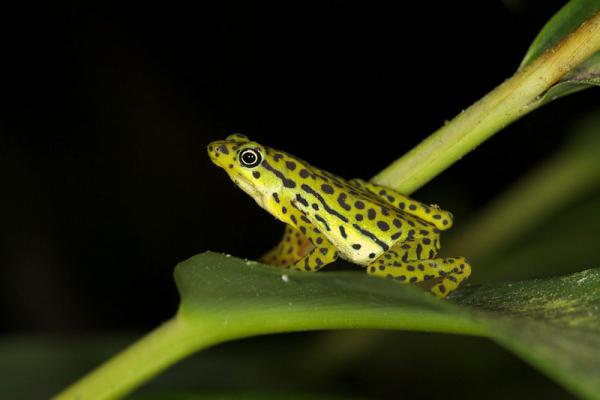
Amphibian Search Ends: Few Successes, Many Worries

Scientists have ended their search for the world's so-called lost amphibians animals feared extinct but that may be holding on in a few remote places the conservation group leading the search said today (Feb. 17).
The global search turned up 15 missing species, including rediscoveries in India and Ecuador. There are believed to be up to 100 species of lost amphibians frogs, salamanders and caecilians that have not been seen in a decade or longer, and may now be extinct. The rediscoveries offer a glimmer of hope, but there is still much cause for concern, said scientists from Conservation International. [Related: In Images: 10 Lost Amphibians .]
Few successes
Despite a few successes in the five months since the search began in August, multiple expeditions led to disappointing findings. Conservationists say that should sound a wake-up call for countries, and prompt coordinated efforts to prevent further declines in the populations of these environmentally sensitive barometer-species. Only four of 100 missing amphibians that scientists set out to find were located. Eleven more rediscoveries were unexpected surprises.
The search a first of its kind took place between August and December of 2010. The search combed 21 countries, on five continents, and involved 126 researchers.
The goal was to establish whether populations have survived increasing pressures such as habitat loss, climate change and disease, and to help scientists better understand what is behind the current amphibian crisis.
Threatened species
Sign up for the Live Science daily newsletter now
Get the world’s most fascinating discoveries delivered straight to your inbox.
Amphibians are the most threatened group of vertebrates, with more than 30 percent of species threatened with extinction due to habitat loss and a fungus that causes chytridomycosis a deadly infectious disease among others, Conservation International said.
The four rediscoveries from the scientists' list of 100 missing amphibians:
- The Cave Splayfoot Salamander (Chiropterotriton mosaueri) of Mexico (last seen in 1941).
- The Mount Nimba Reed Frog (Hyperolius nimbae) of Ivory Coast (last seen in 1967).
- The Omaniundu Reed Frog (Hyperolius sankuruensis) of Democratic Republic of Congo (last seen in 1979).
- The critically endangered Rio Pescado Stubfoot Toad of Ecuador (Atelopus balios), which was found this past October. This striking spotted toad was the only species identified in the campaign's "top 10" list to be found.
Other rediscoveries were made in India, where scientists, inspired by Conservation International's global search, launched their own campaign to focus on rediscovering local species. The effort resulted in five missing amphibians being rediscovered, including one that was last seen in 1874 and another which was found by chance in a trashcan.
In Haiti, searches in the country's diminishing forests of the southeast and southwest yielded six surprising rediscoveries of species that were not on scientists' initial list of 100, but that had not been seen in two decades including the Ventriloquial Frog and Mozart's Frog. In Colombia, no species were rediscovered, but three potentially new species to science were documented.










